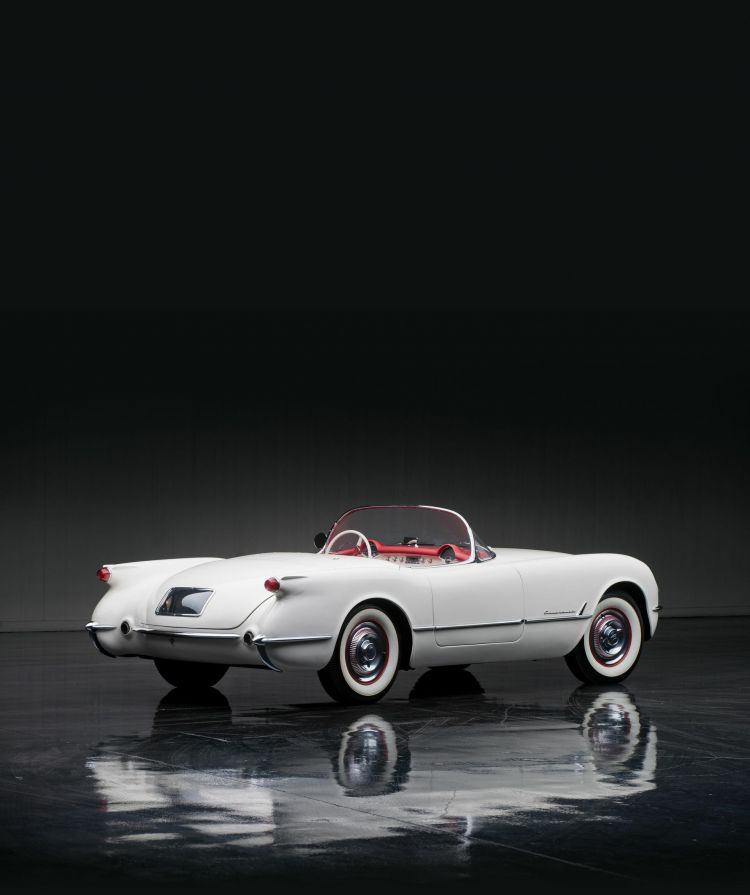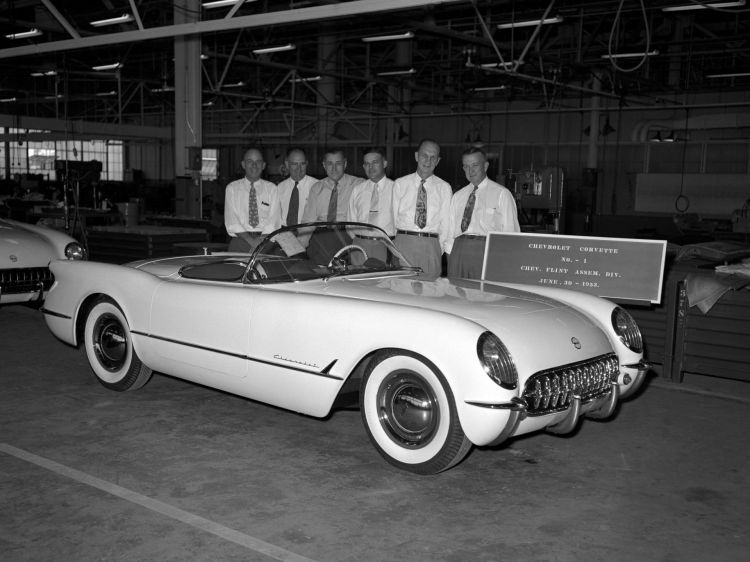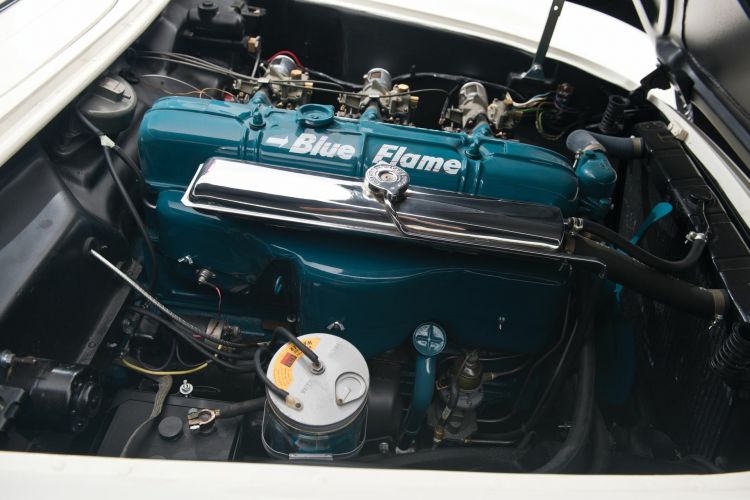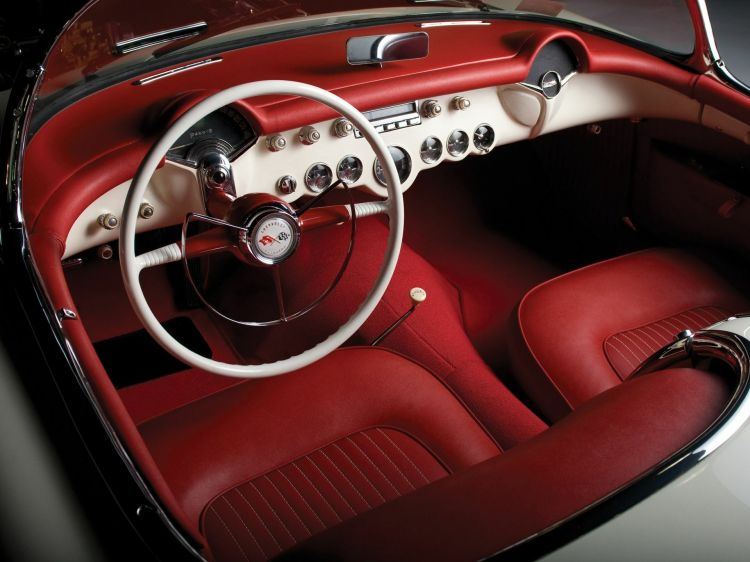The Chevrolet Corvette is possibly The quintessential American sports car. Although its latest generation wants to be a supercar and has its engine in a central position, the true standard of the Corvette is its naturally aspirated V8 engine, from which it is impossible to dissociate it. TRUE? Not so fast: For the first two years of its sale, the Chevrolet Corvette was sold exclusively with a six-cylinder engine. This is the story of the unknown and maligned Corvette “Blue Flame”without whom this American legend would not have been possible.
In order to understand the story correctly, we have to go back to the boom period that came in the United States after World War II. The American occupation in Europe lasted for several years after the conflict, and It was customary for many soldiers to import an exotic European sports car when they returned to the United States. It was common for them to come home with an Alfa Romeo, an MG or a Jaguar. Jaguar was beginning to stand out in the emerging enthusiast market with the XK120, whose 3.4-liter six-cylinder engine was already developing 160 hp.
The United States demanded many sports cars in the early fifties.
In 1951, the sale of Italian-American Nash-Healey sports cars began in the United States, with great commercial projections. Harley Earl, one of the greatest car designers in history, was then working for General Motors. He knew how to see this trend, and convinced the corporate top brass to the need to manufacture a 100% American two-seater sports car, with a convertible body. Thus, at the end of 1951, the “Project Opel” began, whose name sought to confuse the competition. By January 1953, the first prototype was ready.
It was featured in the traveling exhibition Motorama from General Motors, and from the first moment, the public reception was so enthusiastic that the Detroit giant knew that it had to produce it in series as soon as possible. The result of a very accelerated development, the first production units left the assembly line in Flint (Michigan) in June of the same year. You could buy a Chevrolet Corvette C1 in any color, as long as it was white, and its interior could only be ordered in red.
During its first two years, it could only be ordered with a two-speed automatic transmission.
Its price was $3,490, considerably higher than the $2,000 goal of Harley Earl’s vision. The Corvette also had another objective: to relaunch the brand image of Chevrolet, which, deep down, was the cheap brand of General Motors. The first Corvette it had a six-cylinder engine and was only sold with a two-speed Powerglide automatic transmission. Back then, automatic transmissions were cutting-edge technology, and product managers feared that a Corvette with a manual transmission would be seen as an outdated product.
That is, at least, the official version. The reality is that Chevrolet’s iconic small-block V8 was still in development in 1953, and the brand did not have a manual transmission that supported the power of its six-cylinder engine. However, the Corvette’s six-cylinder engine was a technical marvel for its time. Called the Blue Flame, it had a displacement of 3.9 liters and was the final evolution of a family of engines introduced in 1929. This engine had aluminum pistons, an 8:1 compression ratio, and was fed by three carburettors.
At the chassis level, it was an antediluvian car, with a rigid rear axle.
It developed 150 gross CV, and associated with the Powerglide two-speed gearbox and torque converter, did 0 to 60 mph in a very respectable 11.5 seconds and had a top speed of 174 km/h. Today it is a derisory figure for a sports car, but at the time, they were very attractive figures. Sales of the Corvette C1 were disappointing in 1953 and 1954, well below expectations, perhaps because of not too flattering reviews from the press, and features that did not match its spectacular design.
However, in 1955 everything changed. In 1955 Chevrolet’s first small-block V8 began to be sold, its first V8 since 1919. That 4.3-liter engine developed 195 gross hp, and began to be offered as an option in the Corvette range. In addition, in the middle of MY 1955, it could finally be associated with a three-speed manual transmission, something until then impossible. Still, perhaps Ford was to be thanked for giving the Corvette a second chance. In 1955, Ford launched its innovative “personal coupe” Thunderbird.
The Corvette walked a tightrope: a third of production had not been sold by the end of 1954.
The rivalry between Ford and General Motors forced the “general” to redouble his commitment to the Corvette. Double or nothing. And that decision, made in an unfavorable context for Chevrolet, was the one that would end up saving the Corvette. If General Motors had decided not to continue the production of the Corvette, as some commanders wanted, the V8 engine would not have been able to catapult its sales and its popularity – it was a mechanical performance according to the Corvette – and the history of the automobile would have been written in a way completely different.
In 1955, most Corvettes were already V8s., and since then, the V8 engine has been the only mechanical option in the quintessential American sports car. In any case, it should not be forgotten that it was the six-cylinder engine that allowed the Corvette to remain in production long enough until the arrival of the V8.








